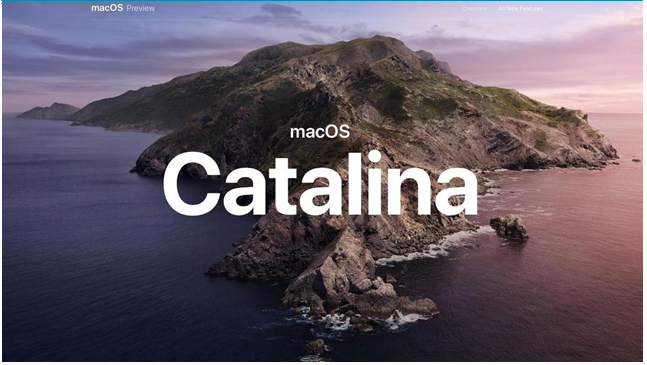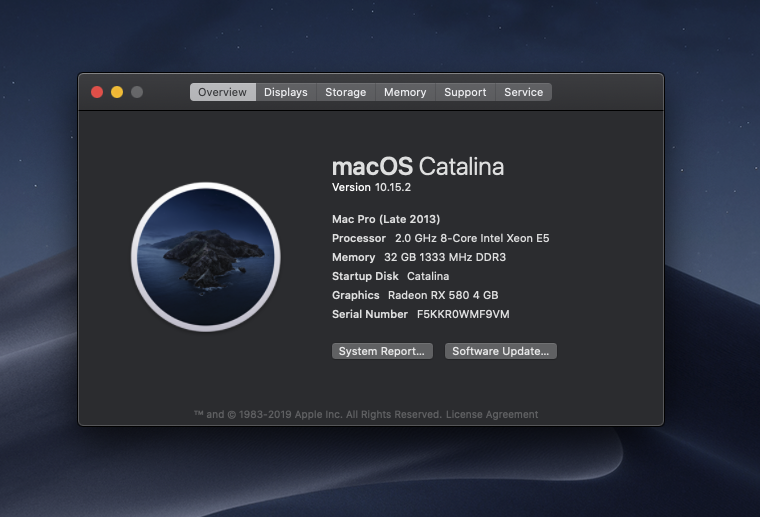

- #Macos catalina cannot be installed on macintosh hd how to
- #Macos catalina cannot be installed on macintosh hd install
- #Macos catalina cannot be installed on macintosh hd update
- #Macos catalina cannot be installed on macintosh hd software
- #Macos catalina cannot be installed on macintosh hd trial
However, if the installation hangs at this point, power cycle and select Windows (Being Kali Linux non-EFI/BIOS). We suggest that you select the EFI Boot volume to continue.
#Macos catalina cannot be installed on macintosh hd install
You may wish to install rEFInd, as it is a boot manager, and try again.Įven though Kali Linux is based on Debian, macOS/OS X always detects non-EFI boot media as Windows. This could be because the age of the firmware on the device. If you only see one volume (EFI Boot), then the installation media is not supported for this device. In-built wireless may not work, as firmware-b43-installer is not included in the default images.When using the graphical installer, you may notice the tracepad does not function (but will after Kali Linux is installed).You may be able to increase the chances of booting (especially older hardware and non-EFI) from a USB drive by having rEFInd pre-installed.Different results when trying to boot by using either a CD/DVD or a USB drive.

Depending on the Mac hardware model & year, you may find:.Currently running macOS/OS X 10.7 or higher (later versions are more preferred) as this means the hardware is Intel (and not a PowerPC CPU).You have read our single boot Kali Linux install guide, as this has the same Installation Prerequisites (System requirements, setup assumptions and install media).This guide will make the following assumptions: The same procedure has also been tested on a Mac Book Air (Early 2014) using macOS Catalina (10.15). In our example, we will be installing Kali Linux on a Mac Mini (Mid 2011) using macOS High Sierra (10.13). However, if you wish to keep macOS/OS X, you will want to refer to our dual-boot guide instead. This guide will show you to replace macOS/OS X with Kali Linux.

#Macos catalina cannot be installed on macintosh hd trial
Most of the time, there are a few issues that come up, so there is a bit of trial and error. Installing Kali Linux (Single boot) on Apple Mac hardware (such as MacBook/MacBook Pro/MacBook Airs/iMacs/iMacs Pros/Mac Pro/Mac Minis), can be a straight forward, if the hardware is supported. The model & year of the device will determine how successful your experience will be. This is true for Linux in general, not just Kali Linux. T2/M1 chips) do not run Linux well, or at all. Step through the installation prompts to complete the installation.įor more on Catalina, see our list of five favorite MacOS 10.15 things as well as all the games you can play in Apple Arcade.IMPORTANT! Newer Mac hardware (e.g.
#Macos catalina cannot be installed on macintosh hd update
Tap the Update - or Get - button to download the update.ģ. If you still don't see it, Apple may be doing a staggered update, so be patient while it rolls out.Ģ.
#Macos catalina cannot be installed on macintosh hd software
If that doesn't work, from the Apple menu, choose About This Mac and tap Software Update to see if it appears.

You can also search for "Catalina" in the store if you don't see it. If Catalina is available, you should see the new OS listed. Head to the Mac App Store, and in the left sidebar tap Updates. Ready? Download and installĪfter you've completed your preparations, you're ready to download and install Catalina.ġ. If not, you'll either have to find a replacement or stick with your current MacOS so you can keep using the software. What that means is, if you have an older app you still use - say, Microsoft Office 11 for Mac - check that you have a 64-bit version of the app before you move to Catalina. With Catalina, Apple is turning off support for 32-bit apps. The download is big - around 6.5GB - and Apple said you should probably have about 20GB of free storage space to install Catalina. If not, get one, because you'll most likely need it during the Catalina setup process and logging into iCloud.Ĭheck your free storage space. If you're a Mac user, you probably have an Apple ID. The Overview tab displays which Mac you have. To check which Mac you have, from the Apple menu, choose About This Mac. Here are the Macs that meet the requirements: Catalina's hardware requirements remain the same as for MacOS Mojave, the current version of the OS, so if you can run Mojave, you can run Catalina.
#Macos catalina cannot be installed on macintosh hd how to
If you can't wait to get your hands on Apple's new Mac OS, here's how to download Catalina and install it.Ĭatalina will bring updated music and photos apps.įirst, before you get started, check that you can install the new OS. And with Catalina, Mac users can now check out Apple Arcade. Perhaps just as useful, the revision lets Mac users run iPad apps they can download through the Mac App Store and use an iPad as a second screen, much in the way you might use a monitor. With Catalina, Apple replaces the iTunes app with three separate apps: Apple Music, Apple Podcasts and Apple TV.


 0 kommentar(er)
0 kommentar(er)
